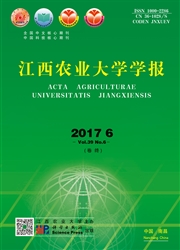

 中文摘要:
中文摘要:
采用室内实验生态学方法对5种不同规格(10.64±0.42 g,16.44±0.67 g,24.67±0.74 g,30.90±1.74 g,37.33±0.98 g)哲罗幼鱼摄食前后的排氨率进行研究。结果表明,饱食后,5个规格组哲罗幼鱼的排氨率均迅速上升,到达最大值后再缓慢下降,最后恢复到各自的初始水平;5个规格组哲罗幼鱼的排氨持续时间(DNR)和排氨率峰值时间(TNR)随着体重的增加而延长;哲罗幼鱼摄食前后排氨率(NR)与体重(t)之间的拟合方程分别为:NR=4.323 6 w-0.555 9(R2=0.992 4,10.64 g
 英文摘要:
英文摘要:
Using the ecological method, the study measured the ammonia excretion rate of young taimen (Hucho taimen, Pallas) in satiation and starvation, at five weights (10.64±0.42 g, 16.44 ±0.67 g, 24.67 ±0.74 g, 30.90 ± 1.74 g, 37.33 ±0.98 g). The results showed that, in satiation, the ammonia excretion rates at the five weights all increased drastically to the maximum, and then decreased slowly to the initial state. DNR and TNR were both prolonged as body weights increased. In starvation, the regression equation of ammonia excretion rate on the weight was NR = 4.323 6 w -05559 (R2 = 0.992 4,10.64 g 〈 w 〈 37.33 g). In satiation, the regression equation of ammonia excretion rate on the weight was NR = 9.371 3 w-0.5755(R2 =0.952 2, 10.64 g 〈 w〈37.33 g).
 同期刊论文项目
同期刊论文项目
 同项目期刊论文
同项目期刊论文
 期刊信息
期刊信息
